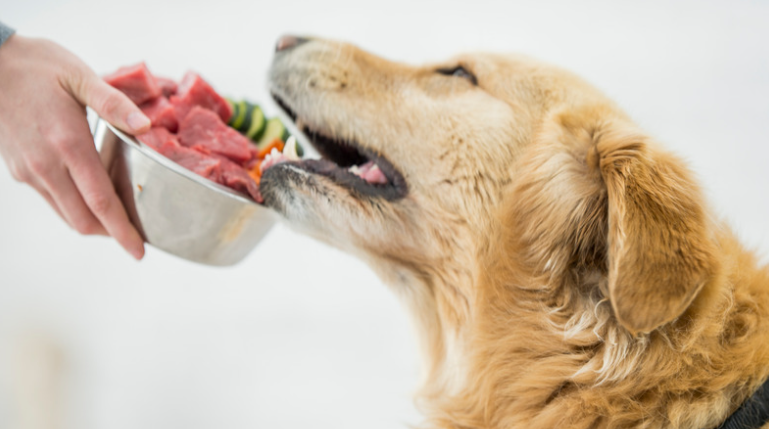Are you considering switching to raw dog food? Changing your dog’s diet can be a big decision, and it’s important to understand the pros and cons of raw dog food before making the switch.
In this comprehensive guide, we’ll explore all the key aspects you should know in 2023 so that you can make an informed choice for your pup. Let’s dive into our comprehensive guide to raw dog food: pros and cons in 2023!
Nutritional Benefits and Risks of Raw Dog Food
Nourishing our beloved canine companions is an important part of being a pet parent. With the increasing popularity of raw dog food diets, it’s no wonder many are curious about their potential benefits and risk management.
Raw dog food contains natural ingredients free from preservatives or additives commonly found in dry kibble or canned wet food. It typically includes muscle meat, organ meats, bone, vegetables, fruits, eggs, oils, supplements like vitamin E and vitamin B complex, zinc, and copper.
All these unique components provide essential nutrients such as protein, omega-3 fatty acids, minerals and probiotics, which contribute to overall body health for your furry friend.
On the flip side, though, careless handling of raw meat can also increase the risk of bacterial contamination, including Salmonella or Listeria monocytogenes.
This means you must take extra caution when preparing meals with raw ingredients; always use clean surfaces and utensils during preparation and food packaging– before feeding your pet and afterwards – to ensure optimal safety standards have been met.
Moreover, some dogs may experience gastrointestinal upset from eating a raw diet, so monitor their behaviour closely after introducing any new type of food into their routine.
Environmental Impact of Raw Dog Food

Raw dog food has both pros and cons when it comes to environmental impact. On the plus side, raw diet advocates point out that locally sourced ingredients for a pet’s meals have less environmental footprint than processed commercial foods because of less packaging, processing, and more sustainable solutions.
Some experts argue that feeding pets exclusively with raw meat can lead to more waste products from slaughterhouses and farms since they are not required to be used anywhere else.
Furthermore, while many people compost their pet’s leftovers, this may not be enough to offset any additional waste generated by producing more animal proteins due to increased market demand.
Ultimately, how much raw dog food affects the environment depends largely on individual lifestyle choices regarding sourcing local produce and responsibly managing leftovers’ disposal.
Raw Dog Food vs Commercial Dog Food

The debate between raw and commercial dog food has been contentious for many years. Both have their pros and cons, but which is the better choice? Let’s look at the facts:
Raw Dog Food
- Contains naturally occurring vitamins, minerals, proteins and fats essential to canine health – all in their natural forms.
- Offers more variety when it comes to dietary choices, such as fish, eggs and vegetables, while commercially prepared foods tend to be limited in terms of their ingredients.
- It may be less likely to cause digestive issues due to a lack of additives like preservatives, colours or flavours that can irritate sensitive stomachs.
Commercial Dog Food
- They are often processed or cooked to extend shelf life and generally contain fewer nutrients than raw diets.
- Raw diets require owners to research what ingredients best suit their pets needs. However, many commercial foods offer convenience with pre-measured portions and easy storage solutions.
In light of this information, each type of diet offers unique benefits based on an owner’s lifestyle preferences and availability of time/resources; however, cost-effectiveness must also come into play if budgeting is an issue. This leads to the next point;
Cost Effectiveness of Raw Dog Food vs Traditional Dog Food

Raw diets are generally more expensive than commercial options, but the quality of the ingredients often justifies their higher price tag. In addition, many pet owners find that they don’t have to feed as much raw diet per meal because dogs digest it better and absorb more nutrients from real meat and vegetables.
This means owners may pay more upfront for the raw diet but save money in the long run since less is required at each feeding.
Traditional dried kibble tends to be cheaper than its raw counterparts; however, this doesn’t necessarily mean you’re getting a better deal. Most commercially available brands contain fillers such as corn or wheat, which lack nutritional value and can lead to digestive issues over time if fed regularly.
In Summary
Both raw dog food and traditional dry kibble have distinct pros and cons depending on individual needs. Understanding what factors will work best for your canine companion before making any decisions can help ensure proper nutrition while still adhering to financial obligations.
As dog owners, we must carefully weigh the pros and cons of raw dog food. With a comprehensive understanding of the risks and benefits of this diet, we can make informed decisions about what’s best for our furry friends.







